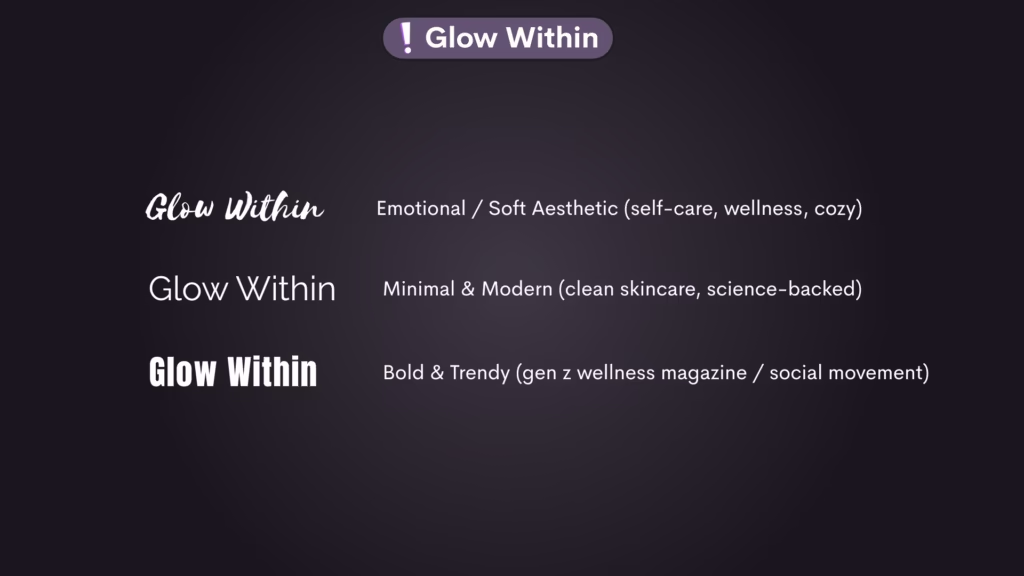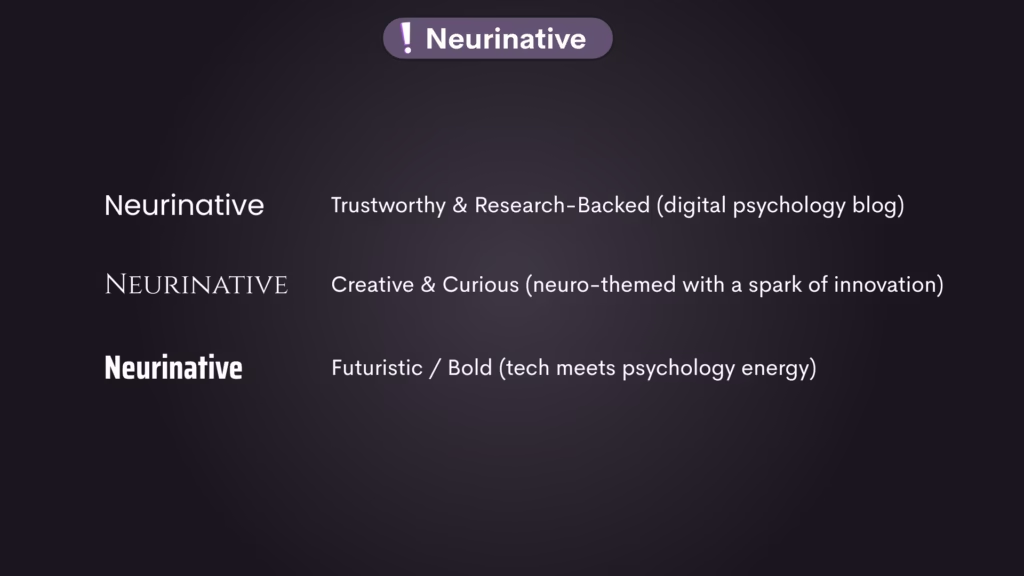Wait… Fonts Have Feelings?
Not exactly — but we definitely do. And guess what? The fonts you choose for your website can totally change how people feel about what you’re saying. That’s what font psychology is all about: the way fonts shape how we perceive information, trust brands, and decide what to click.
You don’t need to be a designer to get this right. You just need to understand a few simple things about how different typefaces affect our brains. Let’s dive in!
So What Is Font Psychology?
Font psychology is basically the study of how different fonts make people feel or react. Think of it as “text psychology” — because yes, your text has vibes.
- A sharp, bold font might come across as strong or assertive.
- A soft, rounded font might feel friendly and welcoming.
- A handwritten script could give off cozy, personal energy.
These reactions aren’t random — our brains are wired to associate visual elements with emotions, especially when we’re online and scanning info fast.
Why Font Psychology Actually Matters (Even if You’re Not a Designer)
Let’s be real: fonts are the first impression of your content. Before someone reads your message, their brain has already made a snap judgment based on how the words look.
Here’s what the right font can do:
- Build instant trust
- Improve readability and reduce bounce
- Encourage people to click, scroll, and engage
Seriously — choosing the best font family for your website might be more important than your favorite shade of color.
A Quick Guide to Popular Font Types (And What They Say About You)
Let’s break it down real quick:
1. Serif Fonts (e.g., Georgia, Times New Roman)
Personality: Classic, serious, trustworthy
Used by: Banks, law firms, newspapers
2. Sans-Serif Fonts (e.g., Open Sans, Helvetica)
Personality: Clean, modern, neutral
Used by: Tech companies, minimal brands
3. Script Fonts (e.g., Pacifico, Allura)
Personality: Elegant, personal, emotional
Used by: Lifestyle blogs, beauty brands
4. Display Fonts (e.g., Lobster, Impact)
Personality: Loud, playful, eye-catching
Used by: Headlines, posters, creative projects
The takeaway? Popular font types aren’t just a style choice — they’re a branding decision.
Choosing the Best Font for Your Website: Quick Tips
Want to choose the best font for your web page? Here’s your cheat sheet:
- Keep it readable (especially on phones)
- Use no more than 2 fonts at once
- Match the mood of your brand
- Test it — always!
Some font families that are amazing:
- Roboto – Balanced, modern, easy to read
- Lato – Friendly, with a touch of personality
- Open Sans – Super clean and versatile
- Georgia – Serif-y, but still screen-friendly
These are solid choices if you want both vibes and clarity.
Glow Within — The Font Makes the Feel
Think of the phrase “Glow Within.”
Now imagine it written in a soft script font. Suddenly, it feels gentle, emotional, almost spiritual — like a cozy self-love journal or a guided meditation app.
But write it in a clean sans-serif font? It shifts. It feels modern, minimalist — like a clean skincare brand with a science-backed promise.
Or try a bold display font — now it’s energetic and trendy, like the name of a digital wellness blog.
Same words. But different fonts unlock different emotions.
That’s the secret of font psychology.

Neurinative — When Your Brand Speaks Through Style
Let’s try it with an actual website name — like Neurinative (that’s us 😌).
In a sleek serif font, Neurinative feels academic and reliable — like a digital psychology think tank.
Switch it to a handwritten font? It becomes more personal, like a founder’s diary or a creative journal of ideas.
Make it all caps in a futuristic display font? BOOM. It feels bold, innovative — a cutting-edge research brand that’s here to shake things up.
Fonts don’t just decorate your brand name — they define its first impression.

Final Thoughts: Your Fonts = Your Voice
Fonts may be quiet, but they speak volumes. Whether you’re designing a full-on brand or just tweaking your blog, font psychology is a super simple way to upgrade how people feel when they see your stuff.
And if you want to go deeper into how design + psychology = click magic…
👉 Read this next: Psychology of Color in Marketing: Build Trust, Boost Clicks, and Stand Out
It’s basically your guide to color psychology 💡🧠
Frequently Asked Questions
Font psychology is how fonts affect our emotions and behavior. Different fonts send different messages — bold ones feel strong, while handwritten ones feel friendly.
Fonts shape how we feel when we see text. Soft fonts can calm us, while sharp ones can create urgency or excitement.
Clean, modern fonts like Open Sans or Montserrat are super popular. They’re easy to read and perfect for websites and branding.
Font personality is the vibe a font gives off — like serious, fun, elegant, or casual. It helps match your font to your brand’s tone.
Fonts are part of typography, a key design element. Typography affects how readable and visually appealing your content is.
